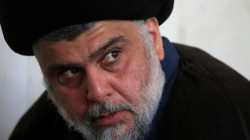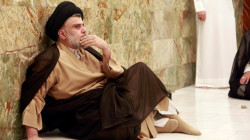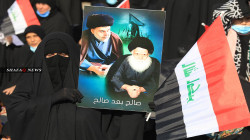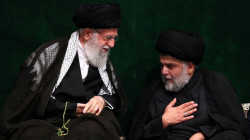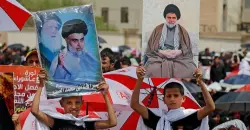The Washington Institute: Iran’s Dilemma in Managing Shiite Conflicts in Iraq
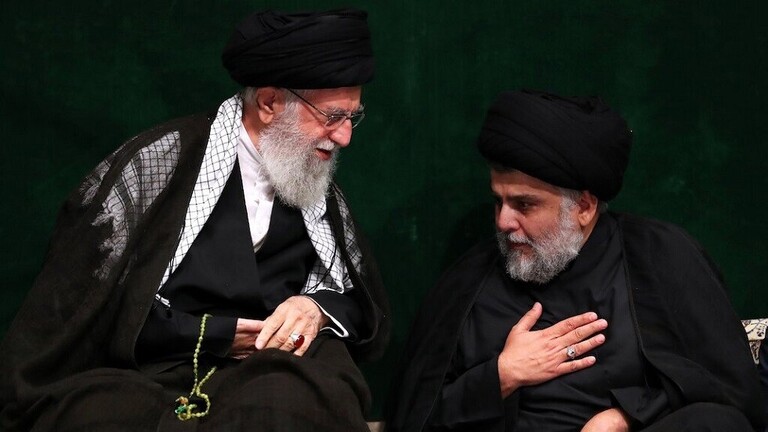
Shafaq News/ Iran has recently adopted a more hands-off approach in Iraqi politics, hoping that the internal fractures will eventually work in their favor.
Iran continues to watch with great concern as the leader of the Sadrist movement, Muqtada al-Sadr, withdraws from the political process—a move that sparked dangerous security confrontations in Iran’s Green Zone at the end of last month, when al-Sadr’s supporters tried to storm the Presidential Palace to stage a sit-in and clashed violently with individuals from armed factions loyal to Iran. With Iran’s allies in the Shiite Coordination Framework struggling to form a new government, Iran’s fears are growing that the current Shiite conflict between al-Sadr and Framework forces will spread further throughout the country, leading to a reformulation of Shiite dynamics in Iraq that may not align with Iran’s goals.
At their core, the challenges facing Iran in Iraq today—especially regarding the restoration of the Shiite political alliance and conservation of intra-Shiite conformity within the confines of Iranian interests—has many root causes. One of the most important causes is the failure of the commander of Iran’s Quds Force, Esmail Qaani, to fill the void left by Qasem Soleimani. At the critical moment when Qaani took over the Quds Force in January 2020, it appeared that he had no clear agenda in Iraq. His assumption of the commander position effectively revealed that the Iranian regime was fundamentally unprepared to deal with an issue as big as Soleimani’s assassination or to identify Iran’s strategic priorities in Iraq after his death.
Evidently, Qaani does not have a clear vision or understanding of the interactions, currents, and fluctuations playing out in Iraq, nor does he have a supportive figure in Iraq as Soleimani did with Abu Mahdi al-Muhandis, the Deputy Chairman of the Iraqi Popular Mobilization Forces. In addition, the multiple roles that Iranian institutions play in Iraq—and their inevitable competition with the Revolutionary Guard—are variables that, in one way or another, undermine the ability of Qaani and the Revolutionary Guard to manage the intra-Shiite conflict in Iraq. This may explain Qaani’s failure during his repeated visits to Iraq to dissuade al-Sadr from his current path. More recently, Iran has chosen to monitor the Iraqi situation without directly intervening, especially because of the strong reactions from al-Sadr and his supporters against Iranian influence. During their recent protests in Baghdad early this month, Tishreen demonstrators likewise voiced strong anti-Iranian sentiments with slogans like “Iran will not rule Iraq.”
The political fragmentation taking place in pro-Iranian groups and the multiplying discourses within the Shiite Coordination Framework, both after al-Sadr withdrew and after his sit-in was dispersed, clearly indicate that Iran is no longer able to control the course of Iraq’s current conflict—not just between al-Sadr and the Framework but now within the Framework, itself.
With major shifts in command following Suleimani’s death and with the Shiite camp internally conflicted and unable to support their Iranian backers, clear concerns have been raised in Iran about the depletion of the military and human capabilities of pro-Iranian armed factions in their fight with al-Sadr’s followers. Although Iran has funded and armed these factions for years, making them what they are today, these fears are accompanied by continued calls from al-Sadr to dissolve the pro-Iranian factions and turn their arms over to the state—calls explicitly made against the backdrop of the recent bloody events.
Al-Sadr and the Struggle Over Shiite Centralization
Although al-Sadr has certainly changed the game, he does not necessarily have the upper hand in Iraq just yet. In late August, the Shiite religious marja (jurist) Kazem al-Haeri announced his resignation and asked his followers to obey Iran’s Supreme Leader Ali Khamenei, not al-Sadr—a move that can be interpreted as a major slight toward al-Sadr, who previously studied under al-Haeri. Although there is no evidence that al-Haeri’s resignation came from Iranian pressure or coercion, it certainly pulled the rug out from under the Sadrist movement, especially since al-Sadr derived a significant level of legitimacy from al-Haeri.
Now, after al-Haeri’s resignation, doubts are growing over al-Sadr’s religious qualifications and leadership skills. In his resignation speech from the Iraqi holy city of Najaf , al-Haeri questioned and minimized al-Sadr’s ability to lead given that he is not a mujtahid. Moreover, through al-Haeri’s recent move, Iran has gained a potential foothold to advance their agenda of Shia nationalism and consolidation centered in the Iranian holy city of Qom, not Najaf. The fact that an Iraqi Shiite cleric such as al-Haeri is urging followers to support Khamenei undoubtedly works in Iran’s favor, giving Iran hope that the historic Shiite conflict between the authority of Qom and Najaf will be put to an end, with Qom winning out and the Shiite world unifying around Iran, which recognizes Velayat al-Faqih (the guardianship of the Islamic jurist).
Still, the al-Sadr camp is fighting back. In response to al-Haeri’s resignation and support for Khamenei, al-Sadr’s minister, Saleh Mohammed al-Iraqi issued a statement on Twitter saying that the Sadrist movement fully recognizes the leadership authority of al-Sadr. Al-Iraqi added that the advice of Muqtada al-Sadr’s father, Shiite marja Mohammed Sadiq al-Sadr, on the necessity of obeying al-Haeri after his death was no longer compulsory after he died in 1999. Al-Iraqi also emphasized the fact that Mohammed Sadiq al-Sadr had previously stated that “[Khamenei’s] jurisdiction is within the borders of his region.” All told, this constitutes a clear recognition that beyond acknowledging Velayat al-Faqih in its Iranian reading, the Sadrists historically have not recognized the religious authority of al-Haeri. Al-Sadr and his supporters view al-Haeri’s decision as nothing more than an Iranian attempt to marginalize the Sadr family and its centrality within the Iraqi Shiite camp.
In his opposition to Iran, al-Sadr has tried to force Iran’s hand in acknowledging the centrality of Iraqi representation in the Shiite world. However, what has ended up happening is a major disappointment for al-Sadr. After the assassination of Soleimani, he had hoped that Iran would turn to him to manage the Iraqi situation, but Iran instead turned to other local leaders and even broadened the role of the Lebanese Hezbollah leader, Hassan Nasrallah, in Iraq. Moreover, al-Sadr has firmly advocated for the duality of Qom and Najaf, but Iran has not acknowledged any change in this equation. This may explain al-Sadr’s statement after al-Haeri’s retirement saying that Shiite religious authority is located in Najaf, not Qom.
As al-Sadr faces some significant stumbling blocks, Iran seems keen to sit on the sidelines, at least for now. Despite Qaani’s ineffectiveness in the wake of Sulemani and Iran’s apparent inability to control either al-Sadr or their Framework allies, the current dynamics in Iraq may still lead, in one way or another, to the reformulation of the Shiite political community in Iran’s favor.
On the ground, the discord between al-Sadr and Iran is glaringly obvious. Supporters of the Sadrist movement are chanting slogans such as “neither Eastern nor Western,” a hashtag al-Sadr has written more than ten times on social media in recent months, which equates to “neither Iran nor America.” Another popular slogan is “no to dependency,” which refers to armed factions loyal to Iran. Considering this tense environment, Iran considers it a much safer bet to let the internal Iraqi conflict play out without exerting much of its own influence on the situation.
Moreover, Tehran can still use al-Sadr as a source of strength in Iraq, especially should the Shiites face a common external threat. Even al-Sadr’s campaign for Iraqi nationalism is not necessarily a closed door for Iran. Rather than being anti-Iranian, the narrative can be reframed as a mere transformation of Iran’s role in Iraq—a transformation that actually makes al-Sadr Iran’s partner rather than its subordinate.
Outlook on the International Stage
The events in Iraq pose a host of challenges for U.S. policy, especially with regard to oil supplies and the United States-Iran nuclear talks. Despite the recent warnings issued by the White House calling for the Iraqi parties to engage in dialogue, President Joe Biden’s administration may actually be facing a dual risk regarding the Iraq situation. Firstly, chaos in Iraq has caused significant fluctuations in Iraqi oil supplies that may jeopardize Biden’s efforts to calm the U.S. crude oil market ahead of midterm elections this coming November.
More importantly, al-Sadr’s stumbles may strengthen Iran globally at a crucial geopolitical moment vis-à-vis the Iran-United States relationship. In the short term, the political situation in Iraq can increase Iran’s regional influence if a strong Coordination Framework government is formed that takes away al-Sadr’s leverage. In the long term, this can embolden Iran to take a more aggressive approach in nuclear talks with the United States. As it stands, Iran is in no hurry as it awaits the outcome of the nuclear talks, likely with the knowledge that they can use the Iraq situation against the United States and its allies should the talks continue to falter. Political chaos in Iraq would lead to the halting of Iraqi oil flows to the global market, which would raise oil prices—providing Iran with the perfect opportunity to export large quantities of oil currently restricted under U.S. sanctions in order to satisfy global demand. Naturally, the United States fears this scenario could play out, especially as the Iraqi Shiites remain disjointed.
(The Washington Institute)
